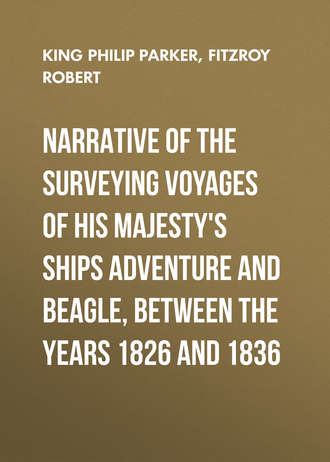Narrative of the surveying voyages of His Majesty's ships Adventure and Beagle, between the years 1826 and 1836
 полная версия
полная версияNarrative of the surveying voyages of His Majesty's ships Adventure and Beagle, between the years 1826 and 1836
Настройки чтения
Размер шрифта
Высота строк
Поля

